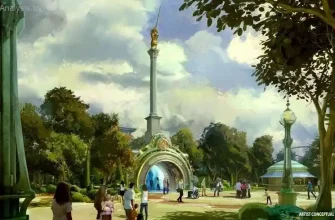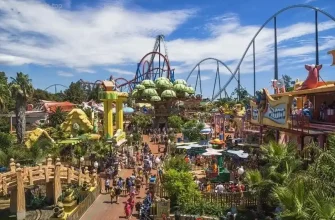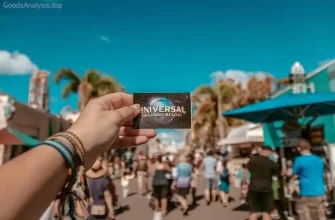Savannah, Georgia, is a place where history and Southern charm blend seamlessly, and the heart of it all is the Savannah Historic District. This enchanting area, often referred to as one of the most beautiful urban landscapes in the United States, is a living testament to the city’s rich cultural history, stunning architecture, and lush greenery. Whether you’re a history buff, a nature lover, or just in search of a picturesque spot to explore, Savannah’s Historic District offers something special for every visitor.
What Makes Savannah Historic District Special?
The Savannah Historic District is an extraordinary area that spans 2.5 square miles and is often described as the city’s “heart and soul.” Its iconic features include:
- The Squares: There are 22 historic squares in the district, each filled with towering oaks draped in Spanish moss, historic statues, fountains, and charming parks. These squares serve as the anchor points around which the district’s streets and neighborhoods have developed over the centuries.
- The Architecture: The district is renowned for its beautifully preserved antebellum buildings, Greek Revival, Colonial, and Victorian-style homes, many of which date back to the 18th and 19th centuries. Stately mansions, cobblestone streets, and ironwork balconies transport you back in time.
- River Street: Running along the Savannah River, this lively cobblestone street is lined with shops, restaurants, and galleries. It’s the perfect place to stroll and take in the views of the river, watch ships pass by, and enjoy the local culture.
- Forsyth Park: A 30-acre park at the southern end of the Historic District, Forsyth Park is famous for its grand fountain, which has become a symbol of the city. The park also features walking paths, gardens, and statues that create a peaceful and scenic atmosphere.
Visitor Tips & Practical Information
Best Time to Visit:
The best times to visit the Savannah Historic District are during the spring (March to May) and fall (September to November). The temperatures are mild, the weather is pleasant, and the area is less crowded than during the summer. The spring months also bring blooming flowers, adding to the beauty of the parks and squares.
Opening Hours & Ticket Prices:
- Forsyth Park: Open daily from sunrise to sunset. Free to visit.
- Savannah City Tours (Bus & Walking Tours): These typically run from 9 AM to 5 PM and range in price from $25 to $50, depending on the type of tour.
- Riverboat Cruises: Available year-round with prices starting at around $25 per person for a one-hour sightseeing tour.
Accessibility:
The Savannah Historic District is fairly walkable, and the city’s flat terrain makes it ideal for pedestrians. There are also accessible trolleys, horse-drawn carriage rides, and buses if walking is not an option. Many attractions are wheelchair accessible, though it’s always a good idea to check in advance, especially for older buildings.
Parking:
There are several parking garages and metered parking spots throughout the district. It can get tricky to find free parking, especially on weekends, so it’s wise to use public transportation or rideshare services.
History and Cultural Significance
The city of Savannah was founded in 1733 by General James Oglethorpe, making it one of the oldest cities in the United States. Its layout, designed by Oglethorpe himself, is still in use today, with the squares and streets that he established at the heart of the city’s design. Savannah served as a major port during the colonial and antebellum periods and was a crucial battleground during the American Revolution and Civil War.
Over the years, the city has preserved much of its historic charm, especially in the Historic District, where old homes, churches, and public buildings remain as a testament to the city’s rich history. Savannah is also known for its deep cultural ties to the arts, particularly in the fields of literature, music, and film. The city’s unique blend of Southern traditions and modern culture continues to draw visitors from around the world.
What to Expect When You Visit the Savannah Historic District
Walking through the Savannah Historic District feels like stepping back in time. The slow pace of life, the scent of magnolia in the air, and the sight of grand mansions lining the streets create a calm and inviting atmosphere. As you stroll through the squares, you’ll notice the striking contrast between the well-preserved buildings and the modern world around them. Expect to see horse-drawn carriages clopping by, locals enjoying a leisurely afternoon, and visitors snapping photos at every turn.
Notable Experiences:
- Take a Walking Tour: There are several walking tours available that delve deep into the history of the district, from its colonial past to its role in the Civil War. Many tours also focus on Savannah’s famous ghost stories and paranormal history.
- River Street: Head down to River Street for a vibrant mix of shops, boutiques, and local eateries. Watch riverboats and freighters pass by, grab a praline from a local shop, or enjoy a cool drink at one of the many bars with a view of the water.
- Enjoy Forsyth Park’s Fountain: One of Savannah’s most iconic spots, the Forsyth Park Fountain is a must-see. The beautiful white cast-iron fountain is a popular photo spot, particularly during the early morning or late afternoon when the light is soft.

Nearby Attractions and Dining Options
Attractions:
- Bonaventure Cemetery: Located just outside the Historic District, this hauntingly beautiful cemetery is famous for its old oak trees, statuary, and historic graves. It was also the setting for the novel Midnight in the Garden of Good and Evil.
- The Owens-Thomas House & Slave Quarters: This historic house offers an in-depth look at the life of an elite Savannah family, along with a sobering exploration of the lives of the enslaved people who worked for them.
- Telfair Museums: This collection of museums includes the Telfair Academy, the Jepson Center, and the Owens-Thomas House, offering a broad range of art, history, and culture for visitors to enjoy.
Dining:
- The Grey: Located in a former Greyhound bus station, this upscale restaurant offers Southern-inspired dishes with a contemporary twist.
- Mrs. Wilkes’ Dining Room: A beloved institution for classic Southern comfort food, known for its fried chicken, cornbread, and collard greens.
- The Collins Quarter: A modern cafe that blends Australian café culture with Southern influences, perfect for brunch or lunch.
- Leopold’s Ice Cream: A vintage soda fountain offering some of the best homemade ice cream in the city, ideal for a treat while exploring.
Family-Friendly and Group Travel Tips
Savannah is an excellent destination for families and groups. The Historic District offers numerous kid-friendly activities, such as exploring the many parks, enjoying River Street, or riding on a historic trolley. Forsyth Park also has a playground for children, and there are family-friendly tours available. For larger groups, Savannah’s walking tours and riverboat cruises are an enjoyable way to experience the city together.
Instagrammable Moments and Photo Opportunities
There are endless opportunities for stunning photos in the Historic District:
- Forsyth Park Fountain: The iconic fountain, surrounded by lush gardens, is a must-have photo for any Instagram feed.
- The Streets of Savannah: The charming streets lined with oak trees draped in Spanish moss create an atmospheric setting for your photos. The streets of Jones and Abercorn are particularly photogenic.
- River Street at Sunset: Capture the beautiful glow of the Savannah River as the sun sets over the water, with boats and ships in the distance.
Travel Tips and Transportation
Getting There:
Savannah is easily accessible by car, with I-95 and I-16 connecting the city to major hubs like Atlanta, Charleston, and Jacksonville. The Savannah/Hilton Head International Airport (SAV) is also a short drive away, offering flights from many major cities.
Transportation:
Once in the Historic District, walking is the best way to explore. However, Savannah also has an excellent network of trolleys, buses, and rickshaws. Many visitors opt for a hop-on-hop-off trolley tour to cover key attractions, while others choose to explore on foot or rent bicycles for a more active adventure.
Safety and Etiquette Tips
Savannah is generally a safe city, but like any urban area, it’s important to take basic precautions:
- Stay aware of your surroundings, especially at night.
- While the city is known for its warm hospitality, it’s customary to be polite and respectful to locals. Tipping is expected in most service-oriented businesses (15-20%).
- Be mindful of the weather, especially in summer, as it can get hot and humid. Carry water, wear sunscreen, and take breaks in the shade when necessary.
Funny Facts and Historical Anecdotes
- In 1779, Savannah was the site of a failed British siege during the American Revolution. The city’s defense and subsequent occupation by the British was one of the most pivotal moments of the conflict.
- Savannah is famously known for its “haunted” reputation. The city’s long history has given rise to countless ghost stories, many of which are tied to the historic homes and cemeteries in the district.









